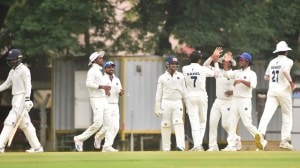Swraj Paul bares Quattrocchi link
NEW DELHI, April 9: London-based businessman Swraj Paul says that one reason he fell out with former Prime Minister Rajiv Gandhi was because...

NEW DELHI, April 9: London-based businessman Swraj Paul says that one reason he fell out with former Prime Minister Rajiv Gandhi was because he refused to oblige Ottavio Quattrocchi who represented Italian government firm Snamprogetti in India.
In his book Beyond Boundaries: A Memoir, recently published by Viking (Penguin Books India), Paul claims that “strenuous efforts” were made to get him to buy Snamprogetti equipment for a proposed fertilizer project.Paul was an ardent supporter of both Indira Gandhi and Sanjay Gandhi. His relations with Rajiv, however, soured for several reasons.
One was the long legal tussle over acquiring the shares of Escorts and DCM. Another was Paul’s refusal to bow down to the wishes of Quattrocchi who is alleged to be one of the recipients of the Bofors kickbacks.
This is the first time that Paul has gone public with this “information.”In his book, Paul writes that sometime towards the middle of 1984, Indira Gandhi informed him that DCM had decided not to set up thefertiliser complex for which a licence had been granted to the company.Indira Gandhi asked Paul whether he could replace DCM and establish the project. Paul, head of the UK-based Caparo group, agreed and applied for the project. Not very long afterwards, Indira Gandhi was assassinated.
More than six months later, Paul says, he received a phone call at his London office from Vincent George (who was then the personal secretary to Rajiv Gandhi and is now with Sonia). George asked him whether he was still interested in the fertilizer project and Paul said yes.
A few months later, Paul writes, George tracked him down to Hawaii where he was informed that he had been given the go-ahead for the project, estimated to be worth $ 300 million. Among the companies which wanted to supply the technology and equipment for the project, was Snamprogetti but its quotation, according to Paul, was $ 35 million higher than other quotations.
“I… believed that (Snamprogetti) equipment was not the best in technologicalterms. However, strenuous efforts were made to ensure that I purchased it. Ottavio Quattrocchi, their representative in India, told me that the Prime Minister wanted this technology used,” writes Paul. (Page 136)
To resist the pressure, Paul writes, he met Rajiv Gandhi several times. Though the former Prime Minister told him to use the best and least expensive technology, he found his project making no progress.
In 1988, the licence for the fertiliser plant came up for renewal. Paul writes: “Such extensions are usually automatically granted. The three other fertiliser manufacturers, who had all purchased Snam equipment, had their permits renewed. Without prior notification, mine was cancelled and promptly given elsewhere. My only regret is that I was unable to erect the kind of fertiliser facilities that India needs — and that with the cheapest and best technology.”
(Special to The Indian Express)



- 01
- 02
- 03
- 04
- 05




























